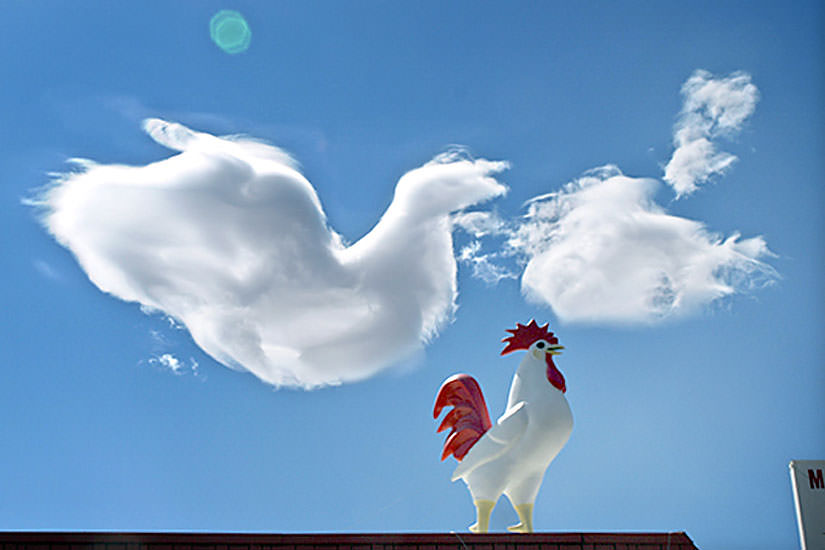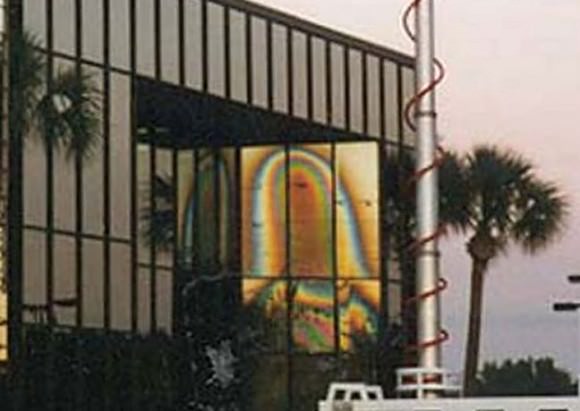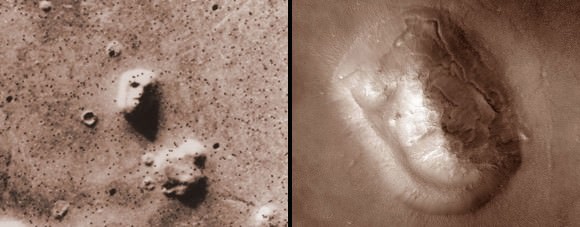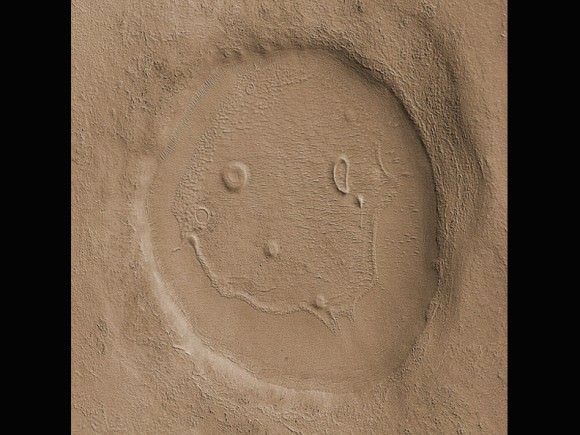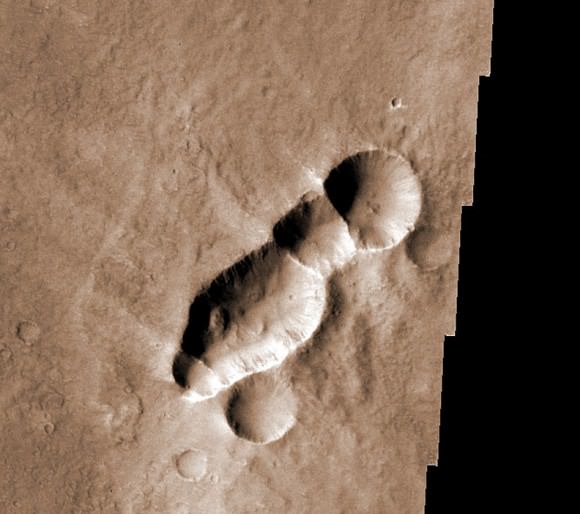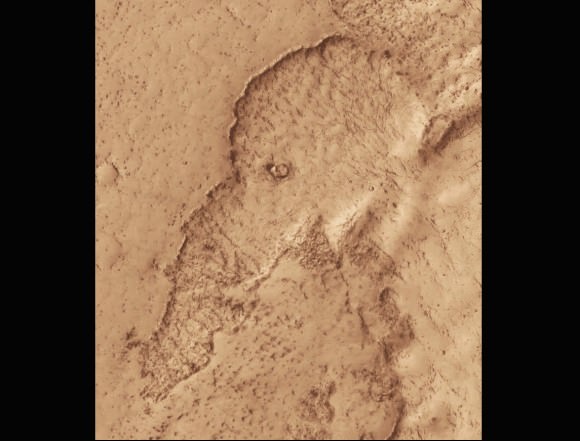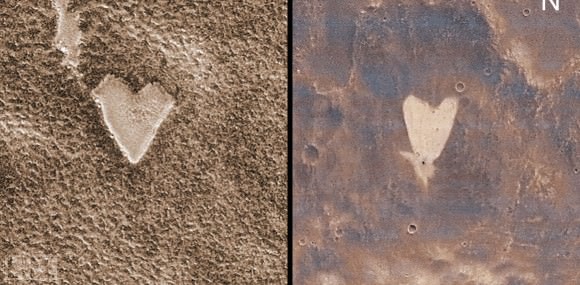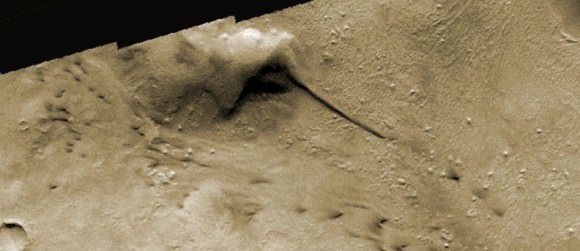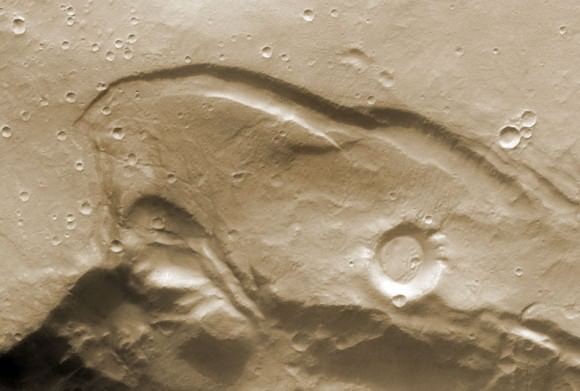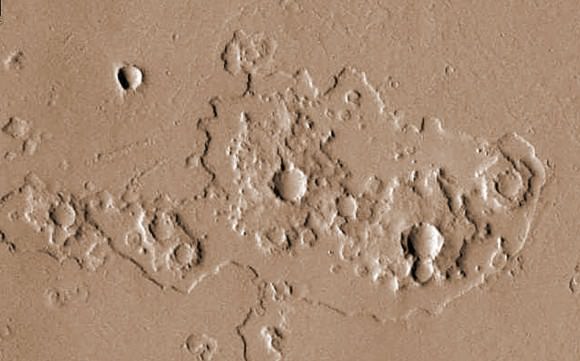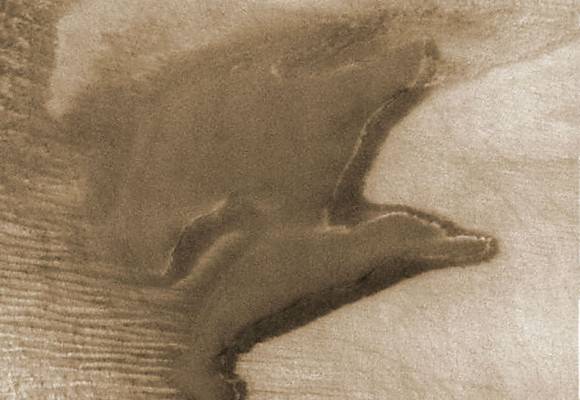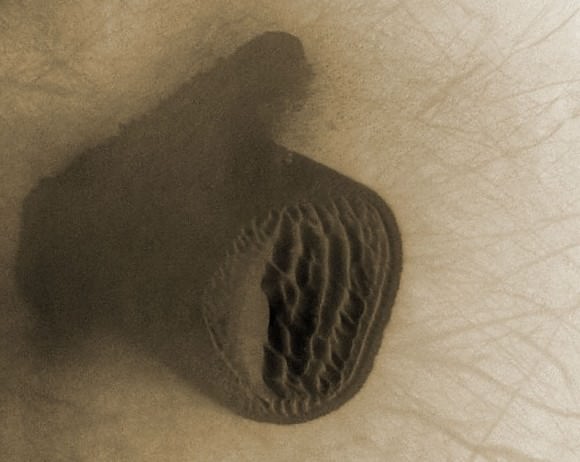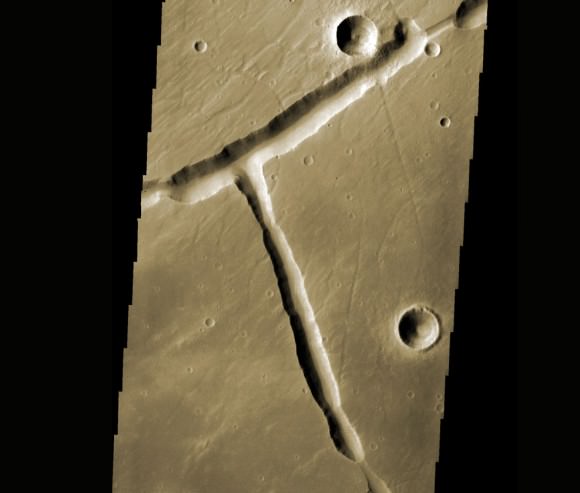As kids, my friends and I would stare at clouds on lazy summer afternoons and point out faces and animals we saw in their folds and domes. When the light was right, some of them looked as detailed and real as if chiseled by a meteorological Michelangelo. Later, with kids of our own, we often revisit this simple pleasure.
[caption id="attachment_103328" align="aligncenter" width="580"]
image of the "Virgin Mary" appears in the glass of a Tampa, Florida office building on Christmas Day 1996. Credit: Wikipedia
[/caption]
Patterns can materialize anywhere - old men with scraggly beards in carpeting, blocky visages in road cuts and even
Jesus on toast
. Here are
50 more
fun examples. Our instinctive ability to find patterns in the often random mish-mash of nature is called
pareidolia
(pair-eye-DOLE-ya).
The late planetary scientist and astronomy popularizer Carl Sagan believed pattern-recognition was part of our evolutionary heritage:
"As soon as the infant can see, it recognizes faces, and we now know that this skill is hardwired in our brains," wrote Sagan. "Those infants who a million years ago were unable to recognize a face smiled back less, were less likely to win the hearts of their parents, and less likely to prosper."
Maybe it's simpler than that. Face-recognition is critical because we ultimately need each other for survival not to mention keeping track of the kids in the grocery store. Pattern recognition also helped us find food back in the days of hunting and gathering. The ability to distinguish a particular plant or animal against the background noise meant the difference between a full belly or starvation.
[caption id="attachment_103329" align="aligncenter" width="580"]
The infamous Mars Face (left) photographed in comparatively low resolution by the Viking orbiter in 1976 and a much higher resolution view made by current Mars Reconnaissance Orbiter. Credit: NASA
[/caption]
Pareidolia also works its magic across the cosmos. To narrow the scope, I've selected images taken of Mars, the most fertile planet for imaginary faces around. Who doesn't remember all the hubbub over the "Face of Mars"? Old Viking spacecraft images from the mid-1970s taken at low resolution in slanted lighting seemed to show a face carved of rock staring back at Earth.
Since pareidolia works best when the stimulus is vague or the object unclear the "face" was perfect. Our brains are more than happy to fill in fictional details. Later photos taken at much lower altitude with higher resolution cameras made the face disappear; in its place we clearly see an eroded mesa. Then there's the so-called "
Bigfoot on Mars
," (an extremely very tiny Bigfoot) and later someone zoomed in on a small rock and said there was a
gorilla on Mars.
Information equals identity, lack of detail opens the door to anything we might imagine.
Here are 10 examples of imaginary faces and creatures on Mars. The inspiration to write about the topic came from a
series of recent "art" images
taken with the THEMIS camera on board the
Mars Odyssey spacecraft
. The probe orbits Mars every 2 hours and carries three science instruments; the camera combines images shot in 5 wavelengths or colors of visual light and 9 in the infrared or heat-emitting part of the spectrum. Others were snapped by the
Mars Reconnaissance Orbiter
. All are NASA images, and I've taken the liberty to colorize several of the black and whites to approximate the appearance of the color images.
Enjoy!
1.
My Happy Martian
[caption id="attachment_103330" align="aligncenter" width="580"]
Martians obviously have a sense of humor. This 2-mile-wide (3 km) unnamed crater was photographed in 2008 by the Mars Reconnaissance Orbiter.
[/caption]
- That Buzzing Sound
[caption id="attachment_103331" align="aligncenter" width="580"]
This crater chain with its wispy "wings" of impact debris resembles a wasp. The feature was most likely created when a meteorite arriving it at a very low angle broke into pieces just before impact.
[/caption]
- The Mammoth Still Lives
[caption id="attachment_103332" align="aligncenter" width="580"]
Lava flows in Mars' Elysium Planitia region have left a rather good likeness of a woolly mammoth or elephant. The region is known for some of the planet's youngest lavas - this one may have formed as recently as the past 100 million years.
[/caption]
- Have A Heart (or two)
[caption id="attachment_103333" align="aligncenter" width="580"]
I love these two little hearts. The one on the left is a mesa top outlined by frost about the size of a football stadium. On the right, a small impact crater near the tip of the heart blew away dark surface material exposing lighter soil beneath. Some of the material appears to have flowed downslope to create the heart.
[/caption]
- Rare Sighting Of A Dust-Covered Hummingbird
[caption id="attachment_103334" align="aligncenter" width="580"]
The head and long beak of a hummingbird is easy to imagine in this scene. I can't say for sure how these features formed but wind and erosion no doubt played a part.
[/caption]
- Hitchcockian Horror
[caption id="attachment_103335" align="aligncenter" width="580"]
Martian bird of prey or just another wayward pigeon?
[/caption]
- Get It In Gear
[caption id="attachment_103336" align="aligncenter" width="580"]
The eroded blankets of ejecta blasted out when these craters formed look like a series of interlocking gears.
[/caption]
- Lone Wolf On The Martian Prairie
[caption id="attachment_103338" align="aligncenter" width="580"]
Dark sand dune deposits look eerily like a howling wolf.
[/caption]
- Thumbs Up!
[caption id="attachment_103339" align="aligncenter" width="580"]
These dunes remind me of a Minnesota "Thank you" for jump starting your car on a cold winter morning.
[/caption]
- To A "T"
[caption id="attachment_103340" align="aligncenter" width="580"]
Tectonic stretching of the Martian crust created this unusual right-angle fracture. I wonder how many other letters of the alphabet we might find on the Red Planet?
[/caption]
 Universe Today
Universe Today
